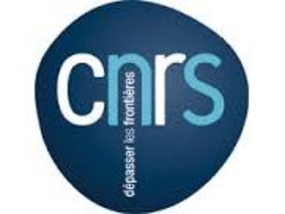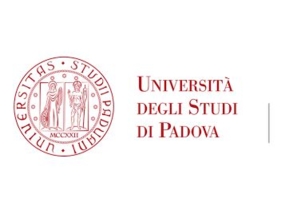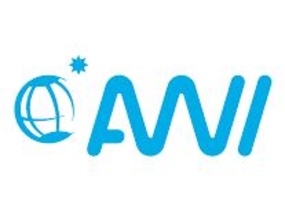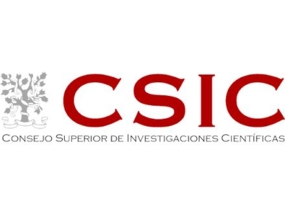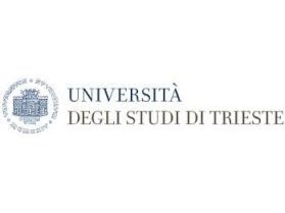VIVALDI-related articles published in 2020
Manuscript: Oyster hemolymph is a complex and dynamic ecosystem hosting bacteria, protists and viruses (Samuel Dupont, Ana Lokmer, Erwan Corre, Jean-Christophe Auguet, Bruno Petton, Eve Toulza, Caroline Montagnani, Gwen Tanguy, David Pecqueur, Christophe Salmeron, Laure Guillou, Christelle Desnues, Bernard La Scola, Jacques Bou Khalil, Julien de Lorgeril, Guillaume Mitta, Yannick Gueguen, Jean-Michel Escoubas).
Published in Animal Microbiome, 2020, DOI : https://doi.org/10.1186/s42523-020-00032-w
VIVALDI partners involved: CNRS, IFREMER
The impact of the microbiota on host fitness has so far mainly been demonstrated for the bacterial microbiome and we know much less about host-associated protist and viral communities. However, all microorganisms within a microbiome potentially interact with each other as well as with the host and the environment, therefore likely affecting the host health. We set out to explore how environmental and host factors shape the composition and diversity of bacterial, protist and viral microbial communities in the Pacific oyster hemolymph, both in health and disease. Our study shows that oyster hemolymph is a complex ecosystem containing diverse bacteria, protists and viruses, whose composition and dynamics are primarily determined by the environment. However, all of these are also shaped by oyster genetic backgrounds, indicating they indeed interact with the oyster host and are therefore not only of transient character. Whereas we could not identify a common microbial community signature for healthy animals, OsHV-1 μVar virus dominated the hemolymph virome during the disease outbreak, without significant modifications of other microbiota components.
---
Manuscript: Parallel analysis of miRNAs and mRNAs suggests distinct regulatory networks in Crassostrea gigas infected by Ostreid herpesvirus (Umberto Rosani , Miriam Abbadi, Timothy Green, Chang-Ming Bai, Edoardo Turolla, Giuseppe Arcangeli,K. Mathias Wegner and Paola Venier)
Published in BMC genomics, 2020, DOI: https://bmcgenomics.biomedcentral.com/articles/10.1186/s12864-020-07026-7
VIVALDI partners involved: UNIPD and AWI
Small non-coding (snc) RNAs and mRNAs were simultaneously sequenced from six Crassostrea gigas oysters naturally infected by OsHV-1 (Goro, Italy). Based on 151 oyster miRNA (MirGeneDB) predictions, Cgi-mir-10-P2 (mir-100), Cgimir-279, Cgi-mir-184-P7 and Cgi-mir-1 represented most of the sncRNA reads and 15 miRNAs were found differentially expressed among the six samples. Sample clustering guided by the expression levels of miRNAs or mRNAs was consistent with OsHV-1 RNA/DNA ratios (relative transcriptional activity) and with the absolute levels of OsHV-1 RNAs, respectively. This suggests a distinct regulation of miRNA and mRNA expression, dependent on the OsHV-1 stage for miRNAs. Cgi-mir-750 was one of the most induced miRNAs in samples with high OsHV-1 infection and it was the miRNA with the highest number of matches among DEGs.
---
Manuscript: Extracellular traps (ETosis) can be activated through NADPH-dependent and -independent mechanisms in bivalve mollusks (Alejandro Romero, Beatriz Novoa, Antonio Figueras)
Published in Developmental & Comparative Immunology, 2020, DOI: https:// doi: 10.1016/j.dci.2019.103585
VIVALDI partner involved: CSIC
In mammals, NETosis is a process in which the activation of neutrophils induces the release of chromatin. This DNA prevents the spread of infection by trapping, neutralizing and killing microorganisms during their interaction with antimicrobial proteins. The release of NETs is usually triggered by stimuli that promote reactive oxygen species production. Although this release of extracellular traps (ETs) has been described in some groups of invertebrates, there is a lack of basic information about them in these animals. In the present study, we describe a robust and reproducible model for the induction, analysis and quantification of ETs production using hemocytes from the bivalve Mytilus galloprovincialis. We analyzed the structure of ETs and the involvement of the ROS in the activation of this process. It was demonstrated that the formation of ETs in hemocytes can be triggered through NOX-dependent and NOX-independent pathways, depending on the stimuli used.
---
Manuscript: Integrated transcriptomic and functional immunological approach for assessing the invasiveness of bivalve alien species (Alejandro Romero, Raquel Aranguren, Rebeca Moreira, Beatriz Novoa & Antonio Figueras)
Published in Nature, 2020, DOI: https://doi.org/10.1038/s41598-019-56421-y
VIVALDI partner involved: CSIC
Biological invasions started when humans moved species beyond their normal geographic limits. Bivalves are the most notoriously invasive species in subtidal aquatic environments. Next-generation sequencing technologies are applied to understand the molecular mechanisms involved in the invasion. The ecological immunology focuses on the role of immunity in invasion, and its magnitude could help to predict the invasiveness of alien species. A remarkable case of invasion has been reported in the Ría de Vigo (Spain) by the black pygmy mussel Xenostrobus securis. In Galicia, the Mediterranean mussel Mytilus galloprovincialis is the predominant cultured bivalve species. Can we predict the invasiveness of alien bivalve species by analyzing their immune response? Can X. securis represent a risk for the autochthonous mussel?
---
Manuscript: Nanoplastics: From tissue accumulation to cell translocation into Mytilus galloprovincialis hemocytes. resilience of immune cells exposed to nanoplastics and nanoplastics plus Vibrio splendidus combination. (M. Sendra, A. Saco, M.P. Yeste, A. Romero, B. Novoa, A. Figueras)
Published in Journal of Hazardous Materials, 2020, DOI: https://10.1016/j.jhazmat.2019.121788
VIVALDI partner involved: CSIC
Plastic litter is an issue of global concern. In this work Mytilus galloprovincialis was used to study the distribution and effects of polystyrene nanoplastics (PS NPs) of different sizes (50 nm, 100 nm and 1 μm) on immune cells.
---
Manuscript: Transcriptomic Analysis Reveals the Wound Healing Activity of Mussel Myticin C (Magalí Rey-Campos, Rebeca Moreira, Alejandro Romero, Regla M. Medina-Gali, Beatriz Novoa, María Gasset, Antonio Figueras)
Published in Biomolecules, 2020, DOI: http://10.3390/biom10010133
VIVALDI partner involved: CSIC
Myticin C is the most studied antimicrobial peptide in the marine mussel Mytilus galloprovincialis. Although it is constitutively expressed in mussel hemocytes and displays antibacterial, antiviral, and chemotactic functions, recent work has suggested that this molecule is mainly activated after tissue injury. Therefore, the main objective of this work was to characterize the hemocytes’ transcriptomic response after a myticin C treatment, in order to understand the molecular changes induced by this cytokine-like molecule. The transcriptome analysis revealed the modulation of genes related to cellular movement, such as myosin, transgelin, and calponin-like proteins, in agreement with results of functional assays, where an implication of myticin C in the in vitro activation of hemocytes and migration was evidenced. This was also observed in vivo after a tissue injury, when hemocytes, with high concentrations of myticin C, migrated to the damaged area to heal the wound. All these properties allowed us to think about the biotechnological application of these molecules as wound healers.
---
Manuscript: Molecular Diversity of Mytilin-Like Defense Peptides in Mytilidae (Mollusca, Bivalvia) (Samuele Greco, Marco Gerdol, Paolo Edomi, Alberto Pallavicini)
Published in Antibiotics, 2020, DOI: https://10.3390/antibiotics9010037
VIVALDI partner involved: UNITS
---
Manuscript: A GM1b/asialo‐GM1 oligosaccharide‐binding R‐type lectin from purplish bifurcate mussels Mytilisepta virgata and its effect on MAP kinases 5 (Yuki Fujii, Marco Gerdol, Sarkar M. A. Kawsar, Imtiaj Hasan, Francesca Spazzali, Tatsusada Yoshida, Yukiko Ogawa, Sultana Rajia, Kenichi Kamata, Yasuhiro Koide, Shigeki Sugawara, Masahiro Hosono, Jeremy R. H. Tame, Hideaki Fujita, Alberto Pallavicini, Yasuhiro Ozeki)
Published in FEBS, 2020, DOI: https://doi.org/10.1111/febs.15154
VIVALDI partner involved: UNITS
---
---



